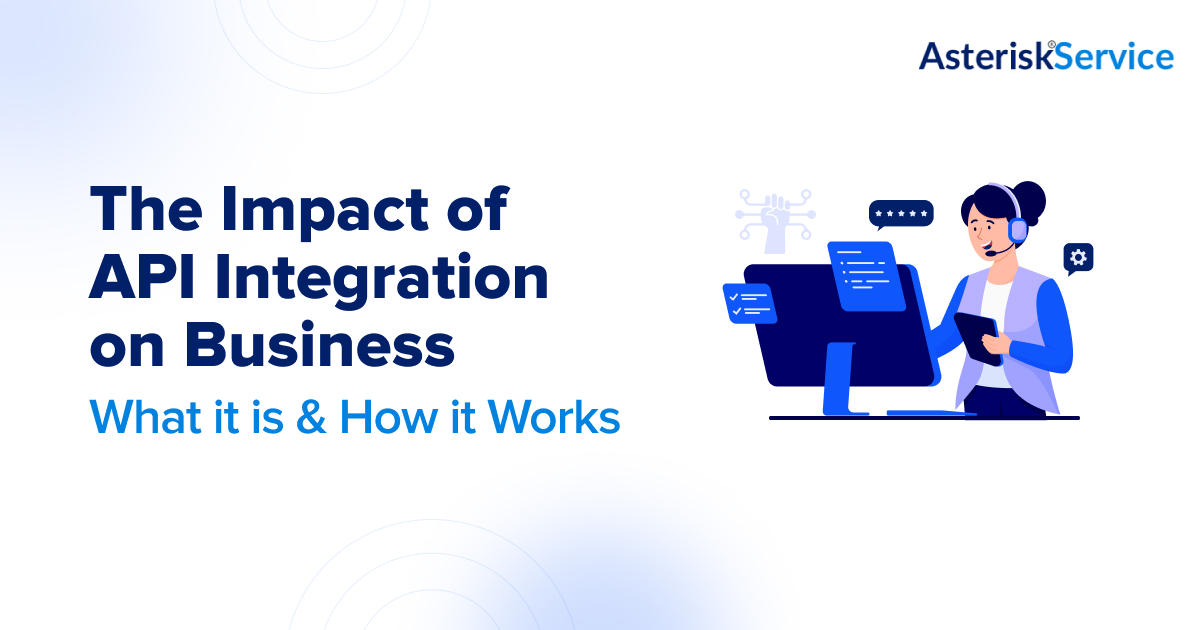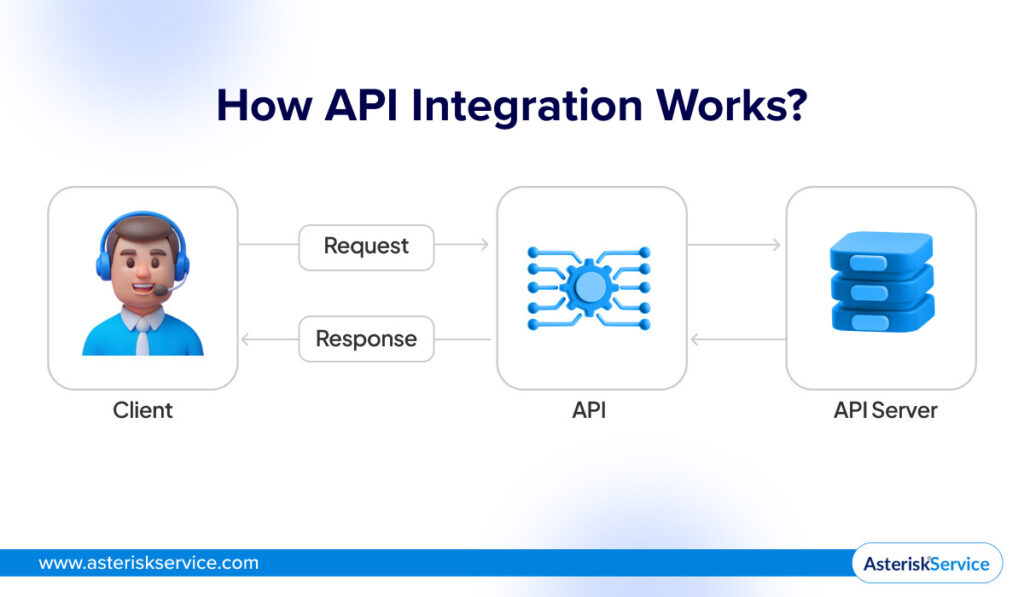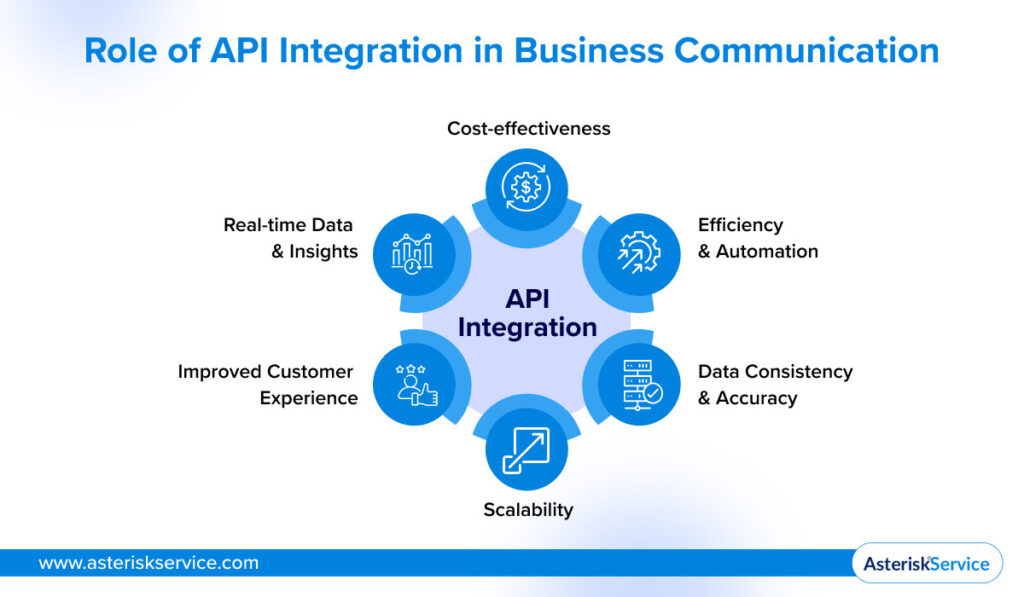
Quick Summary – An in-depth guide to API integration and how it positively impacts your business, enabling seamless data exchange and task automation.
Have you ever considered the escalating transformation in businesses’ digital communication infrastructure? Well, just how fast the night changes! From getting stuck in the web of wires to connecting over the cloud, the rapid evolution has changed the definition of scalability and growth for businesses. One of the technologies aiding this evolution is API integration.
What are API Integration Services?
An API (Application Programming Interface) is software that connects two or more applications, enabling them to work as a unified system. APIs provide a way for different software systems to communicate with each other, exchange data, and perform functions. This allows businesses to automate workflows, share data in real time, and enhance operational efficiency without manual intervention.
How API Integration Works?
The above explanation seems in-depth and technical for a non-tech reader. Let’s discuss how an API works and why API development and system integration are must-have solutions for your business.

1. The client makes a Request
A user or application sends a request to an API endpoint, typically through a URL, asking for specific data. (Such as Weather information)
2. API Sends the Request to the Server
An API (Application Programming Interface) is software that connects two or more applications, enabling them to work as a unified system. APIs provide a way for different software systems to communicate with each other, exchange data, and perform functions. This allows businesses to automate workflows, share data in real-time, and enhance operational efficiency without manual intervention.
3. The server Processes the Request
The server receives the API request, analyses it, performs some necessary information, such as fetching data from a database, and prepares a response.
4. Server Sends a Response to the API
The server returns the result to the API containing the requested data or operation outcome.
5. API Delivers the Response to the Client
The API sends the response back to the original requester (application), where the data is displayed or used for further action, such as showing the current temperature on a weather app.
Types of API
- Third-party APIs – These are developed and provided by external companies. Examples include payment processors like PayPal or Stripe and cloud services like Google Cloud.
- Custom APIs – Created for internal systems or unique business needs, custom APIs are tailored to a company’s specific requirements.
- Open APIs – Open APIs, like the Google Maps API, are publicly available for anyone to use.
- Closed APIs – On the other hand, closed APIs are private and can only be used by authorized applications.
Role of API Integration in Business Communication
Integration of API for business communication to streamline operations, automate workflows, and ensure seamless data exchange between systems for improved efficiency and scalability.

-
Efficiency and Automation
API integrations allow businesses to automate tasks, eliminating the need for repetitive, manual processes. For example, instead of entering customer data into multiple systems, an API integration can automatically sync data between a CRM and an email marketing tool, saving time and reducing errors.
-
Data Consistency and Accuracy
By integrating multiple systems, businesses can ensure that data remains consistent and accurate across all platforms. When one system updates data, the other connected systems update automatically, ensuring that all employees and systems work with the most up-to-date information.
-
Scalability
API integrations allow businesses to scale by quickly adding new tools, platforms, or services. As the business grows, it can integrate new functionalities without disrupting existing systems, making it easier to manage growth and adopt new technologies.
-
Improved Customer Experience
Businesses can provide more personalized, seamless experiences with integrated customer data and systems. For instance, a customer service team can access a client’s previous interactions from different channels (e.g., email, phone, chat), improving service quality.
-
Cost-effectiveness
API integration reduces the need to build custom software solutions from scratch. Instead of hiring developers to create bespoke systems, businesses can leverage existing APIs, lowering development costs and shortening the market time.
-
Real-time Data and Insights
With API integration, businesses can access and analyze real-time data across various systems. This real-time access improves decision-making, as managers can base their decisions on the most current information from across the organization.
(Also see: Why Asterisk Development Is the Smartest Move for Business Communication)
Use Cases for API Integration in Business
API integration has a wide range of use cases, enhancing communication in every sphere of life.
-
E-commerce
In e-commerce, API integrations can connect payment gateways (like Stripe or PayPal), inventory management systems, and shipping services. This allows businesses to offer a smooth purchasing process, ensuring that payments are processed instantly, inventory levels are updated in real-time, and customers are notified of shipping details without manual input.
-
Healthcare
In healthcare, API integrations can connect Electronic Health Records (EHR) systems with diagnostic tools, insurance platforms, and pharmacies. This ensures patient data flows seamlessly between healthcare providers, improving patient care and administrative efficiency.
-
Finance
Financial institutions use API integrations to connect banking systems with accounting software, payment gateways, and tax filing services. This reduces manual data entry, ensures compliance with regulations, and provides customers with real-time financial data.
-
Marketing
Marketing teams can use APIs to integrate CRM systems with email marketing platforms, social media tools, and analytics software. This helps teams launch more targeted campaigns by pulling customer data from multiple sources and measuring campaign performance across channels.
(Also see: Top 5 Game-Changing Ways to Use Asterisk Voice Broadcasting Solution)
Conclusion
API integration is essential for businesses that streamline operations, enhance customer experiences, and drive innovation. It allows companies to connect systems, automate workflows, and access real-time data for better decision-making. Businesses should explore API integrations as part of their digital transformation strategy, using technology to increase efficiency, reduce costs, and stay competitive in an ever-evolving market.
AsteriskService empowers companies to improve efficiency and scalability by helping businesses seamlessly integrate APIs into their communication network and streamline real-time data exchange, optimizing operations through automation.
FAQs
What is API integration?
API integration connects different software applications and systems to communicate and share data through Application Programming Interfaces (APIs), enabling seamless interoperability.
How does API integration benefit businesses?
API integration allows businesses to automate workflows, enhance data sharing, improve service delivery, and streamline processes, ultimately increasing productivity and efficiency.
How does API integration improve customer experience?
API integration connects systems and enables real-time updates, personalized experiences, faster service, and a more cohesive user experience, which leads to higher customer satisfaction.
What industries benefit the most from API integration?
Every industry benefits from API integration, but it’s incredibly impactful in e-commerce, finance, healthcare, logistics, marketing, and technology, where streamlined workflows and data connectivity are vital.